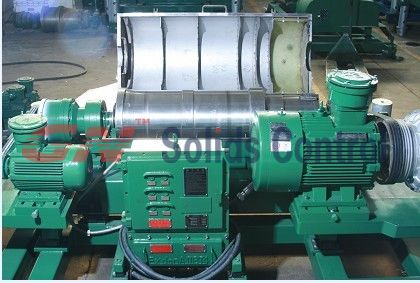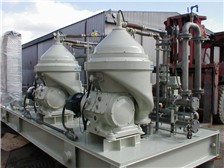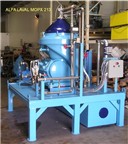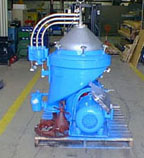Monday, May 10, 2010 - Nuclear energy's prospects are even better now that the Obama administration has promised $4 billion for uranium enrichment projects. That's double the previous limit -- a move meant to complement a separate loan guarantee program to promote the development of nuclear power in this country.
Uranium, of course, is the fuel used to run nuclear power plants. At issue is the centrifuge technology, long used by European plants but fairly uncommon in the United States. Here, the efforts are centered on advancing older and more energy intensive models -- all to accommodate two decades of underinvestment in uranium mining and enrichment.
Of the $4 billion in loan guarantees provided to enrichment efforts, $2 billion is expected to go a USEC project in southern Ohio and $2 billion to French-owned AREVA that is building a facility in Idaho.
Last year, the U.S. Department of Energy rejected a USEC proposal, saying that its centrifuge technology was not ready for prime time. Just recently, though, the agency said it would give the former federal entity a second chance. In doing so, the department awarded the now Maryland-based private company $45 million to further research its technology. Meanwhile, regulators are still reviewing the AREVA application.
"We are working on mechanisms so that each can apply for the original size of their loan guarantee independently," says Energy Secretary Steven Chu, before a congressional committee.
In the 2005 Energy Act, Congress had allocated $2 billion for loan guarantees to advance uranium enrichment processes in the United States. But that money was never allotted. Now, though, there are two such companies that want dibs to it: USEC and AREVA. The Obama administration says that $2 billion from the 2005 Energy Act and $2 billion from 2007 Appropriations Act are available and will satisfy both companies' efforts.
Two other nuclear enrichment projects are also in the works. One is by URENCO, which would be built in New Mexico and which is jointly owned by the British and the Dutch. And a second, which would be constructed in North Carolina and which is owned by General Electric. Both say that they will petition for loan guarantees.
Much of the uranium used in this country is now mined in Australia, Canada and Namibia while small amounts are derived in the western United States. But at least those foreign sources are expected to get fully tapped by such nations as China, India and Russia that are in the midst of expanding their nuclear programs. If this country does the same and it wants to avoid shortages and price spikes, then it must develop its own resources.
Domestic Production
Current demand throughout the world is met by accessing mines, using utility inventories and through new fuel efficiencies that make plants more productive. It's also met by decommissioning nuclear weapons. The United States, for example, gets about half its uranium from obsolete Russian nuclear missiles under a non-proliferation nuclear treaty called Megatons-to-Megawatts. That program ends in 2013.
But fears of global warming and projected fuel shortages are propelling nuclear power forward after three decades of sitting on the sidelines. Globally, the International Atomic Energy Agency is predicting as many as 100 new reactors in 20 years, causing the demand for uranium to rise 200 million pounds to 240 million pounds, annually.
"As we work to increase our domestic fuel supply capacity, U.S. companies supplying the nuclear fuel cycle need the assurance that their investment of resources will receive the support necessary to revive the industry to a long-term, self-sustaining position," says Robert Van Namen, senior vice president of uranium enrichment at USEC, before Congress. "We must rebuild and expand our domestic fuel cycle infrastructure to put us in a position of self reliance for the future."
The price of uranium climbed from $10 a pound in 2003 to $95 a pound in 2008. It has fallen to $65 a pound today, although a rebounding economy will force up that figure. At higher prices, domestic mining companies should increase production beyond the current rate of 5 million pounds a year. As such, the U.S. Nuclear Regulatory Commission anticipates about 20 new mine applications to be filed by 2011.
The increased uranium production will likely be necessary. But there are also tools to allow the spent fuel to be reused and thus give nuclear operators more breathing space. Advanced breeder reactors, meanwhile, are expected to be commercially available within two decades. They will be able to produce as much fuel as they consume.
As for USEC's centrifuge machine, it is based on an Energy Department design from the 1980s that has advanced significantly. But the technology has not reached the point in which U.S. officials feel comfortable awarding the company a $2 billion loan guarantee. USEC does say that if it is able to win such a loan, then it would be able to nearly double its enrichment facility from 3.8 million "work units" to 7 million. That, in turn, would allow this country to grow its nuclear energy program.
"At USEC, we firmly believe that increasing our use of nuclear power will help our nation tackle the severe challenges we face from international energy security to the adverse effects of electricity generated by burning fossil fuels," says Van Namen.
As the global community expands its nuclear energy resources to meet future potential and to conform to greater carbon controls, many nations will require more uranium. This country is anticipating as much and is therefore trying to encourage the domestic development of such fuels.
source: www.riskcenter.com












